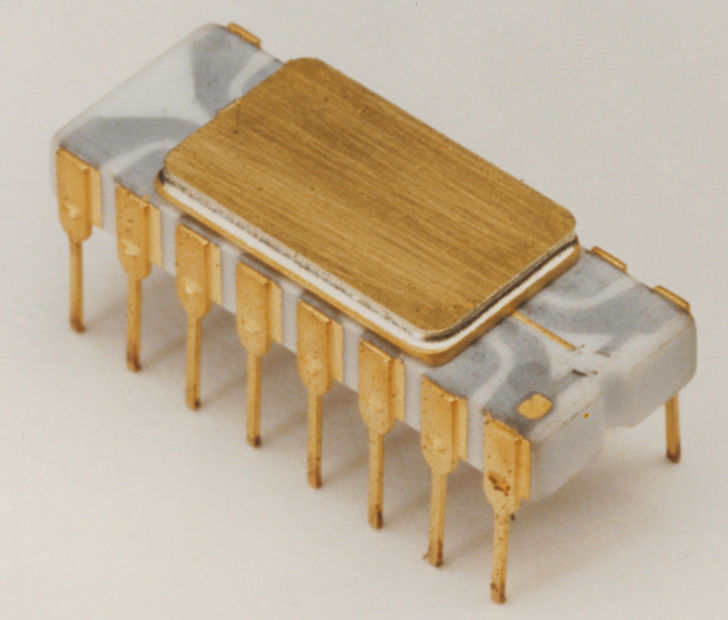Fifty and nowhere near out
- November 25, 2021
- Steve Rogerson

As this month marks the 50th anniversary of the Intel 4004, Steve Rogerson looks back at how that small device changed the world.
I was 15 years old in November 1971. My concerns in those days ranged from schoolwork to my rapidly changing hormones to the fortunes of Shrewsbury Town Football Club; actually, when it comes to Shrewsbury Town FC, not much has changed.
Not surprisingly, I was totally unaware of the launch of the 4004 chip from Intel; I’d never even heard of Intel. If someone had said chips to me then I would have thought of fried potatoes with loads of salt and vinegar and wrapped up in old copies of the newspaper I delivered.
Intel was founded in 1968 by ex-Fairchild (remember them?) employees and by 1971 it was still many years before it would be a name recognised by almost everyone. The 4004 is claimed to be the world’s first commercially available microprocessor, and is this month celebrating its 50th anniversary.
For me doing my maths schoolwork in 1971, calculations were either done on a piece of paper or using a slide rule or log tables. We didn’t have pocket calculators, though the first start appearing before I went to university. I mention this, because the 4004 was developed for the Busicom 141-PF from Japanese calculator maker Nippon Calculating Machine.
What is more important was that this showed it was possible to build complex integrated circuits and fit them on a chip the size of a fingernail, and then use them for a real application. The 4004 was a major step to the rapid change we have seen in technology over the past half century. Today, I – and just about everyone else – carry a calculator around, but it is built into a mobile phone that contains a camera and loads of connectivity features and apps. As someone once pointed out, we now have in our pockets devices that give us access in seconds to the vast bulk of human knowledge, and people use them to share pictures of their cats and food.
Federico Faggin, former Intel engineer, designed and produced the 4004 with Tedd Hoff and Stan Mazor.
“Looking back at 1970, it was clear that microprocessors would change the way that we design systems, switching from using hardware to software instead,” said Faggin. “But the speed with which microprocessors developed over time and were adopted by the industry was really surprising.”
Pat Gelsinger, Intel’s current CEO, summed it up with: “This year marks the 50th anniversary of the 4004 chip. Think of how much we’ve accomplished in the past half-century. This is a sacred moment for technology. This is what made computing really take off.”
In all the fuss this month about the anniversary, I was reminded that the 4004 delivered the same computing power as the first electronic computer built in 1946, which filled an entire room. This was a popular saying in the 1970s and into the 1980s where then current technology was compared with what once would have filled an unspecified sized room. Nobody does that anymore because it no longer makes sense. Rather, the emphasis now is on distributed computing from sealed systems such as a car with separate intelligent units spread around the vehicle to the whole IoT world where edge devices make decisions autonomously while staying in contact with a central hub or other devices.
Even the best science-fiction writers in 1971 did not forecast where the creation of that small device would lead in those fifty years. Likewise, I am not even going to attempt to guess where we will be fifty years from now; crikey, technology moves so fast these days I don’t even know what will be around this time next year. I do know it will probably make my jaw drop, and for that I am grateful to live in an era that has seen and still is seeing such rapid change.
Thank you Intel. The past fifty years have been great. Happy birthday 4004, and here’s to the next fifty years.




